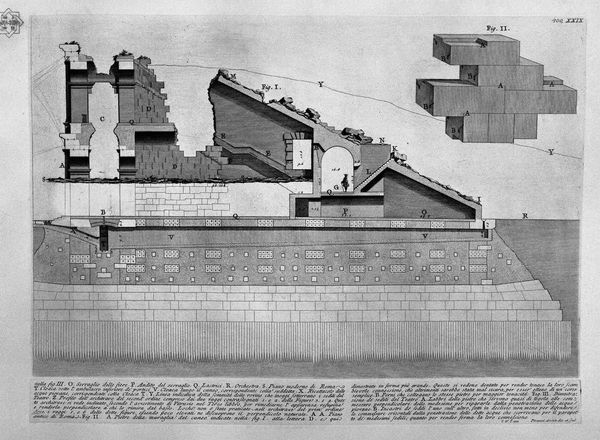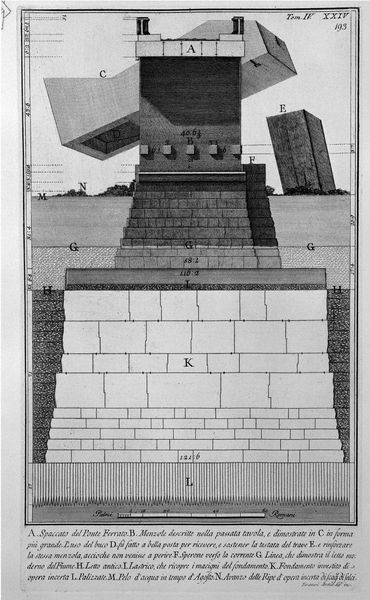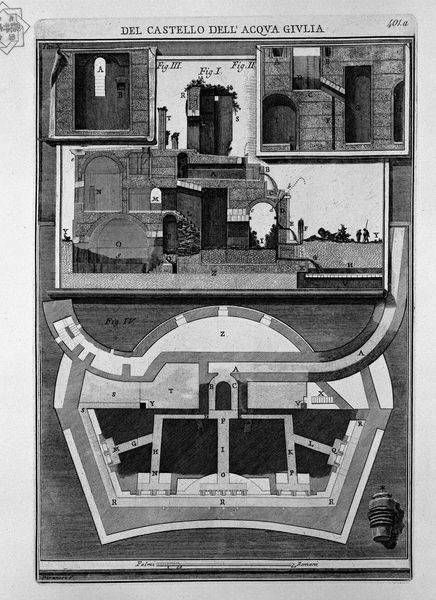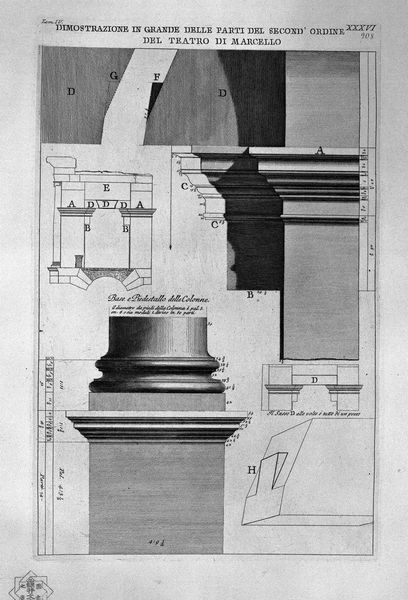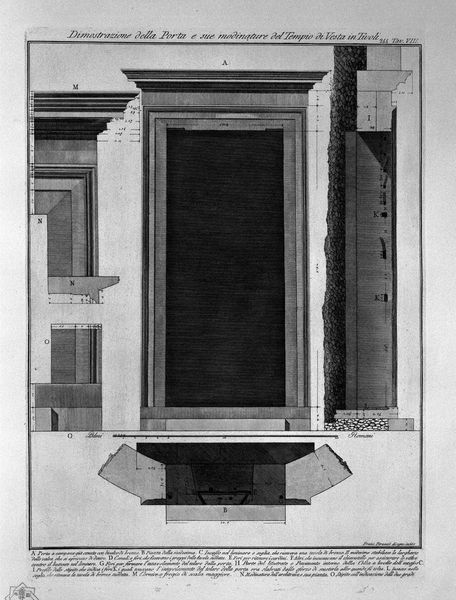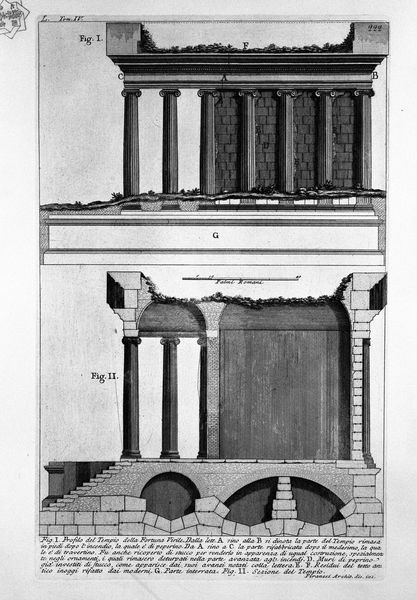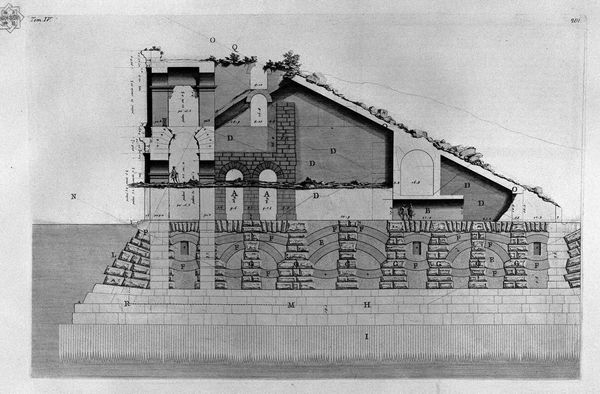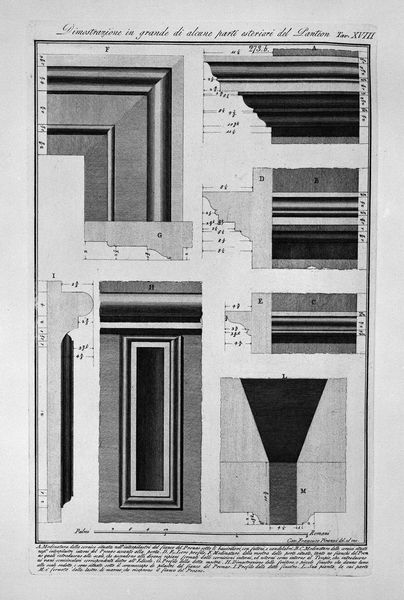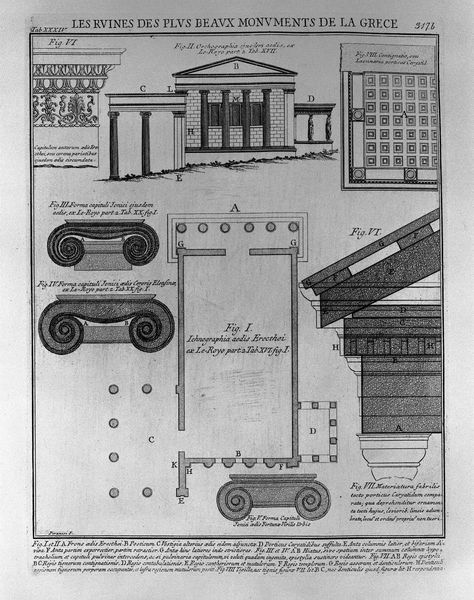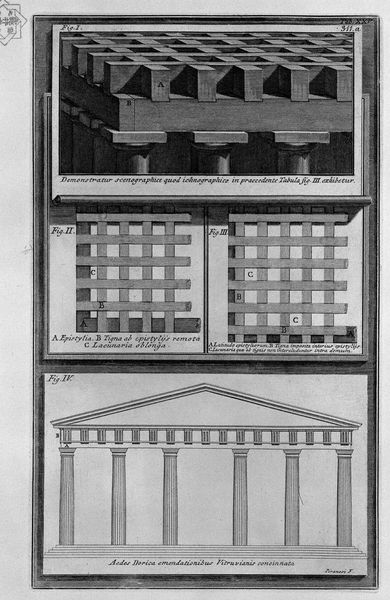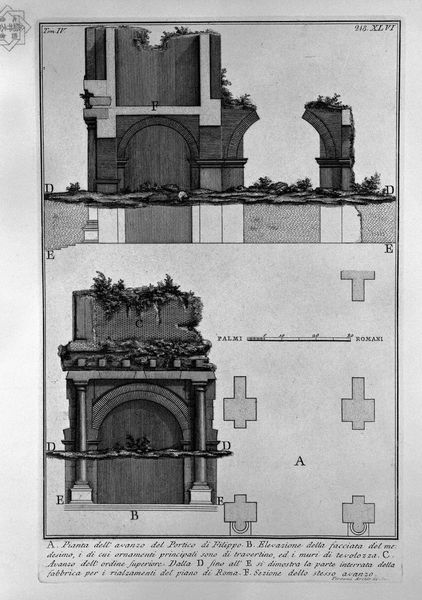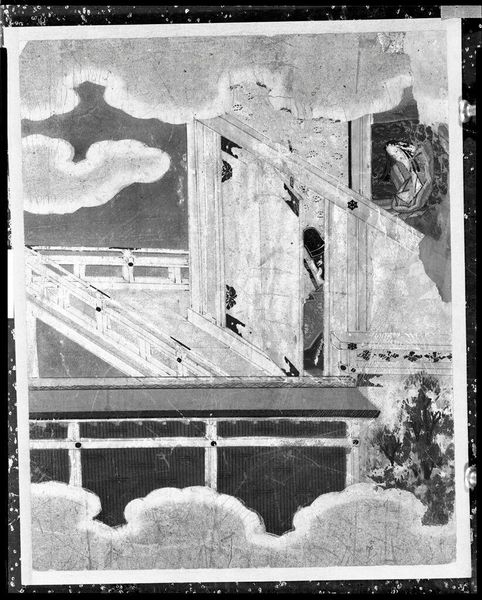
The Roman antiquities, t. 4, Plate XXXVII. Vista of the second-largest share of the Theatre of Marcellus.
0:00
0:00
drawing, etching, engraving, architecture
#
drawing
#
neoclacissism
#
etching
#
classical-realism
#
form
#
geometric
#
ancient-mediterranean
#
line
#
history-painting
#
engraving
#
architecture
Copyright: Public domain
Giovanni Battista Piranesi made this etching, "Vista of the second-largest share of the Theatre of Marcellus", as part of his series on Roman antiquities. Piranesi was working during a time when Europe was obsessed with the grandeur of the Roman Empire. He wasn't just creating accurate records; Piranesi was actively shaping how people saw Rome. Note how Piranesi meticulously details the architectural elements, almost like a technical drawing. He juxtaposes the remaining grandeur with the ruinous decay, emphasizing the passage of time and the inevitable decline of even the most powerful civilizations. Piranesi's Rome is a complex interplay of power, decay, and memory. His work romanticizes the past but also speaks to the ephemerality of human achievement, reminding us that empires rise and fall, leaving behind only fragments of their former glory. There is something deeply melancholic, almost elegiac, about these ruins.
Comments
No comments
Be the first to comment and join the conversation on the ultimate creative platform.

